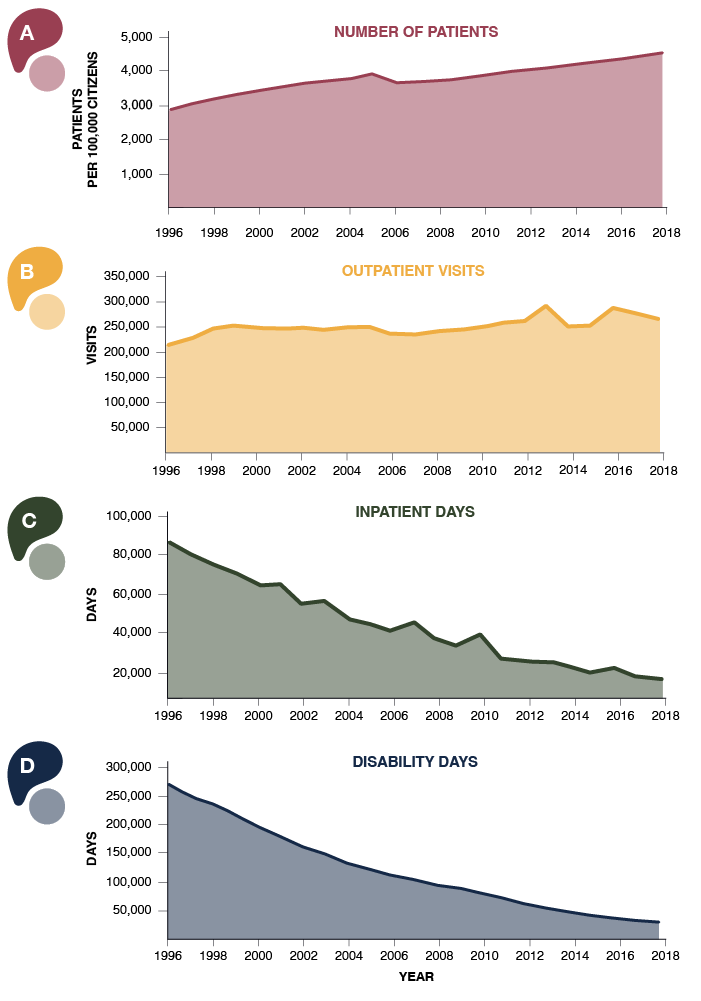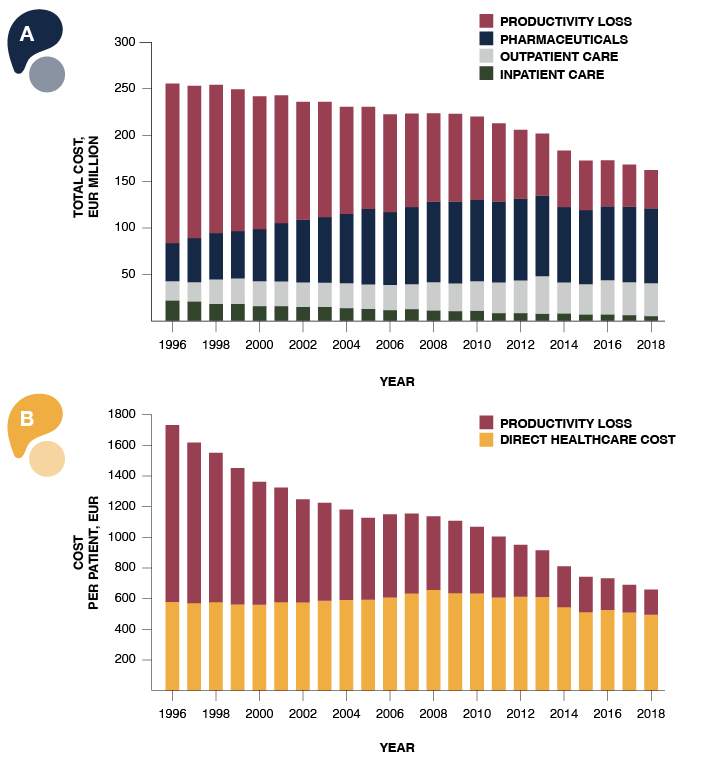EPISODE 2
The Finnish experience
in mitigating
the burden of asthma
Introduction
Asthma imposes a significant burden on both individuals and society. In recent decades, the prevalence of asthma has been on the rise, escalating demand for healthcare resources. A large national campaign, the Finnish Asthma Programme, was implemented in Finland (1994–2004) to address this, with ambitious objectives: to reduce the number of asthma-related hospitalisation days and annual costs per patient by 50%. (1)
In this episode of the Finnish experience series, respiratory physicians Tiina Mattila and Hanna Hisinger-Mölkänen discuss the burden of asthma in Finland, while the text below digs deeper into Finnish registry data and reveals the effects of the Finnish Asthma Programme on disease burden.
The Finnish experience in mitigating the burden of asthma
Asthma affects approximately 300 million people worldwide, and the prevalence is constantly increasing. (2,3) Asthma can be a significant burden to the patient: the symptoms, such as breathlessness, cough, and wheeze, can make everyday life difficult and even lead to hospitalisations and disability.
Despite significant advancements in asthma treatment over recent decades, led by the increased use of inhaled corticosteroids, asthma-related deaths still occur even in developed nations. Most asthma-related deaths would be preventable with appropriate treatment, but not all patients have access to the medications they need. (4)
Revealing the disease burden with insights from Finnish registries
The comprehensive, nationwide registers in Finland allow the follow-up of disease burden over the last 40 years, including asthma diagnoses, outpatient visits, hospitalisations, sick leave days, disability pensions and medication reimbursements. Even longer data series are available from the health records of Finnish military conscripts, including over 90% of all Finnish young men since 1926. These data offer a unique view of the trends in asthma and allergy-related conditions in Finland. (5,6)
According to the registries, the prevalence of asthma in young Finnish men increased over 10-fold from under 0.2% in the early 1960s to over 2% in the mid-1980s, and the rising trend persisted thereafter. (5) In 1993, asthma was recognised as an important public health issue leading to the initiation of Finnish Asthma Programme in 1994. (1)
A declining trend in burden of asthma emerges
Despite the implementation of the Finnish Asthma Programme, the rise in asthma prevalence first showed no signs of decreasing (Figure 1A). In 1987, the prevalence was 1.6%, increasing to 3.6% in 2000 and furthermore to 4.4% in 2013. (7) The prevalence of asthma seems to have stabilised thereafter. Importantly, there was a major improvement in the well-being of the patients with asthma: they reported significantly less symptoms in 2016 than in 1996 (p<0.05). (8) By contrast, neighbouring countries have not witnessed a similar decreasing trend in asthma symptoms. (9)
What also became evident was a significant decline in inpatient days and disability pensions due to asthma. The number of inpatient days decreased from 110,000 in 1993 to a mere 51,000 in 2003. Simultaneously, disability pensions due to asthma decreased from 7,212 cases (accounting for 9% of the 80,133 individuals with asthma) in 1993 to 1,741 cases (1.5% of the 116,067 individuals with asthma) by 2003. (1) Furthermore, age-adjusted asthma-related mortality witnessed a substantial decline of 57%, decreasing from 3.5 to 1.5 per 100,000 individuals annually. (7) This positive course has persisted even after the programme’s completion (Figure 1B–D).
Figure 1. The societal burden of asthma in Finland from 1996 to 2018. (6)
How did this affect the financial burden of asthma on society? The overall annual costs related to asthma steadily reduced from 1996 to 2018, and the cost per patient saw a notable reduction of 60% (Figure 2). (6) The biggest savings were obtained by preserving productivity. (6,7)

Figure 2. The costs of asthma in Finland from 1996 to 2018. (6)
Although it is not possible to demonstrate direct causality between the Finnish Asthma Programme and the observed results, one can assume that it has been an important factor in this success. Therefore, despite an increase in the number of patients, the initial objectives of halving the number of hospital days and annual costs per patient were successfully accomplished. (1)
The evidence has shown that mitigating the burden of asthma is possible. The following articles and videos in this series will dig deeper into the means of accomplishing this: improving asthma diagnostics and treatment practices, as well as education of healthcare professionals.
You might be interested in these:
References
RESP-1483b 05/2023